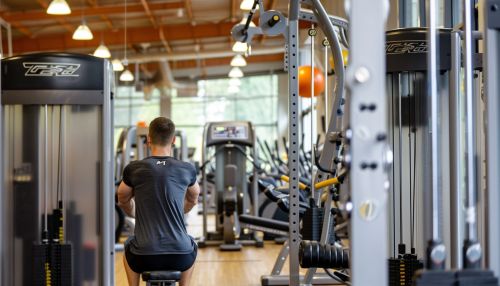Exercise physiology
Introduction
Exercise physiology is a sub-discipline of kinesiology that addresses the short-term biological responses to the stress of physical activity and how the body adapts to repeated bouts of physical activity over time. As such, exercise physiology professionals often have the responsibility of conditioning a person to a higher level of fitness and/or health while, at the same time, being aware of safety issues (risk of injury, illness, etc.) associated with a single exercise session.


History
The study of exercise physiology dates back to ancient civilizations. Ancient Greeks, including the physician Hippocrates and philosopher Aristotle, were among the first to document their observations regarding the effects of exercise on the human body.
Basic Principles
Exercise physiology encompasses the study of the body's responses to physical activity. These responses include changes in metabolism and physiology of various bodily systems such as the cardiovascular system, respiratory system, and muscular system.
Metabolic Responses
During exercise, the body's metabolic rate increases. This increase in metabolism is directly proportional to the intensity and duration of the exercise. The body's primary sources of energy during exercise are carbohydrates and fats. The body also uses protein, but to a lesser extent.
Cardiovascular Responses
The cardiovascular system, which includes the heart, blood vessels, and blood, responds to exercise by increasing heart rate, stroke volume (the amount of blood pumped out of the heart with each beat), and blood pressure. These changes help deliver more oxygen and nutrients to the working muscles.
Respiratory Responses
The respiratory system, which includes the lungs and associated muscles, responds to exercise by increasing the rate and depth of breathing. This increase in ventilation allows for greater oxygen uptake and carbon dioxide removal.
Muscular Responses
The muscular system responds to exercise by increasing muscle temperature, muscle fiber recruitment, and metabolic reactions within the muscle cells. These changes allow for greater force production and endurance.
Adaptations to Exercise
Regular exercise leads to physiological adaptations that improve the function of the cardiovascular, respiratory, and muscular systems. These adaptations enhance the body's efficiency and capacity during physical activity.
Cardiovascular Adaptations
Regular exercise leads to an increase in the size and strength of the heart, a decrease in resting heart rate, an increase in stroke volume, and an increase in the number and size of blood vessels. These changes improve the body's ability to deliver oxygen and nutrients to the working muscles.
Respiratory Adaptations
Regular exercise leads to an increase in lung capacity, an increase in the efficiency of gas exchange, and an increase in the strength and endurance of the respiratory muscles. These changes improve the body's ability to take in oxygen and remove carbon dioxide.
Muscular Adaptations
Regular exercise leads to an increase in muscle size, an increase in muscle strength, an increase in muscle endurance, and an increase in the efficiency of metabolic reactions within the muscle cells. These changes improve the body's ability to produce force and resist fatigue.
Exercise Prescription
Exercise prescription involves the specific recommendation of exercise type, intensity, frequency, and duration by an exercise physiologist or other health professional. Exercise prescription is often used in the management and prevention of diseases such as heart disease, diabetes, and obesity.
Exercise Testing
Exercise testing involves the measurement of physiological responses to exercise in a controlled setting. Exercise testing is often used to assess fitness level, diagnose disease, and guide exercise prescription.
